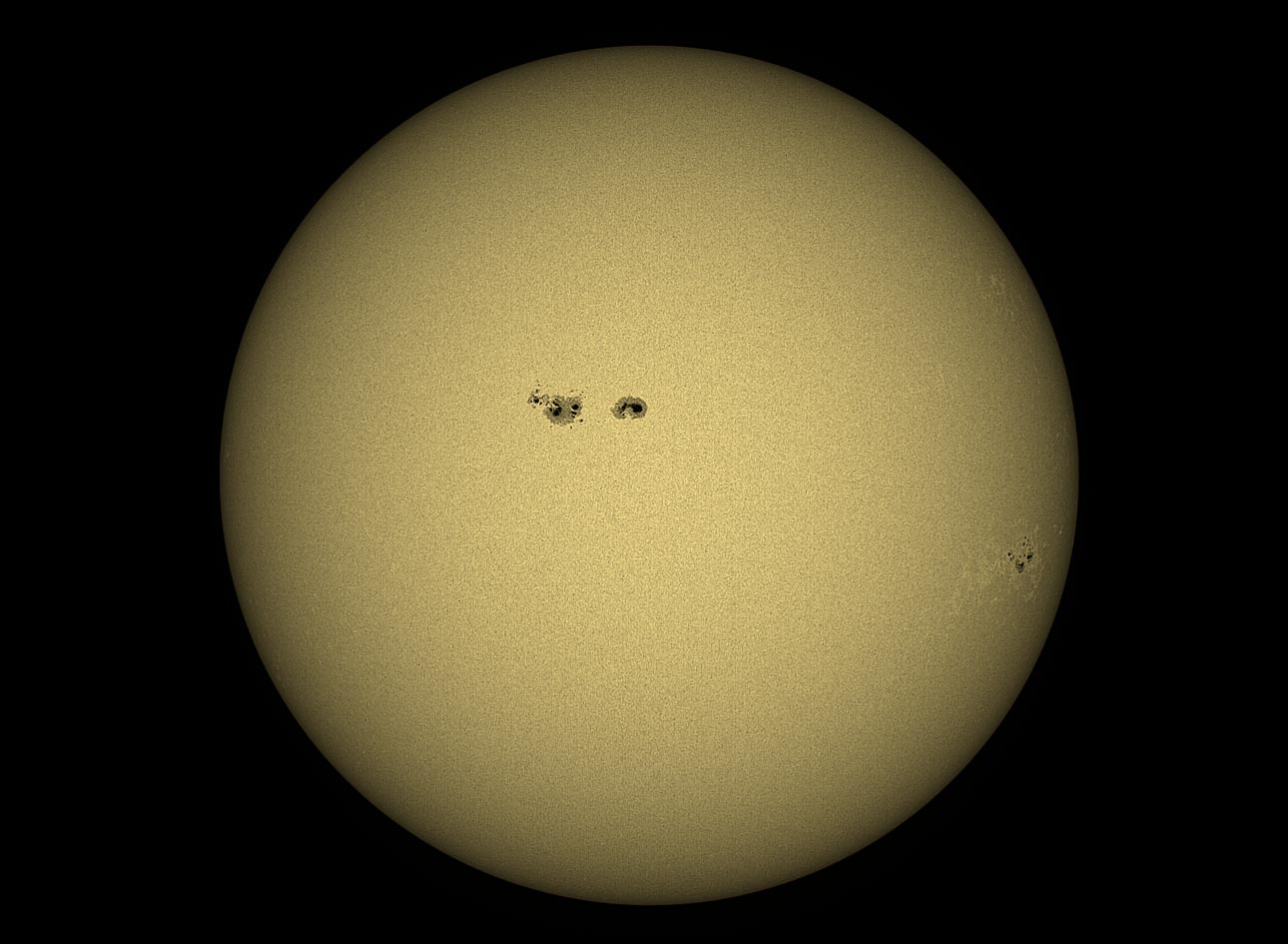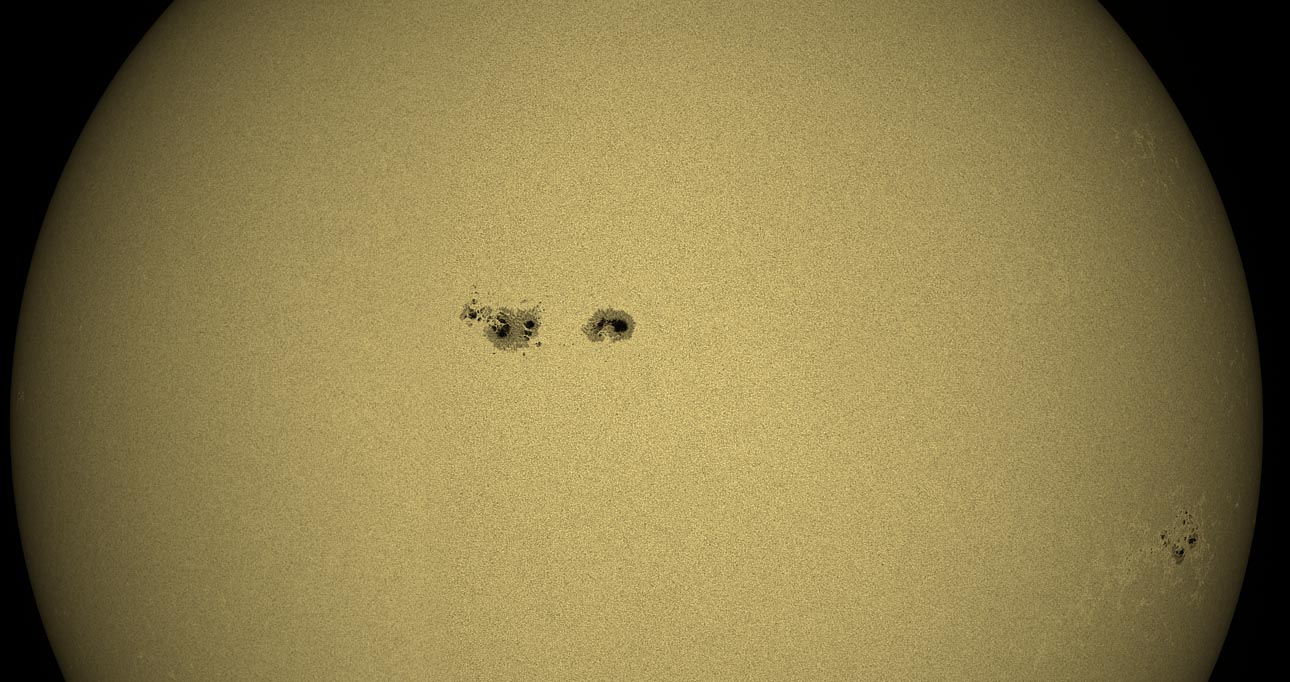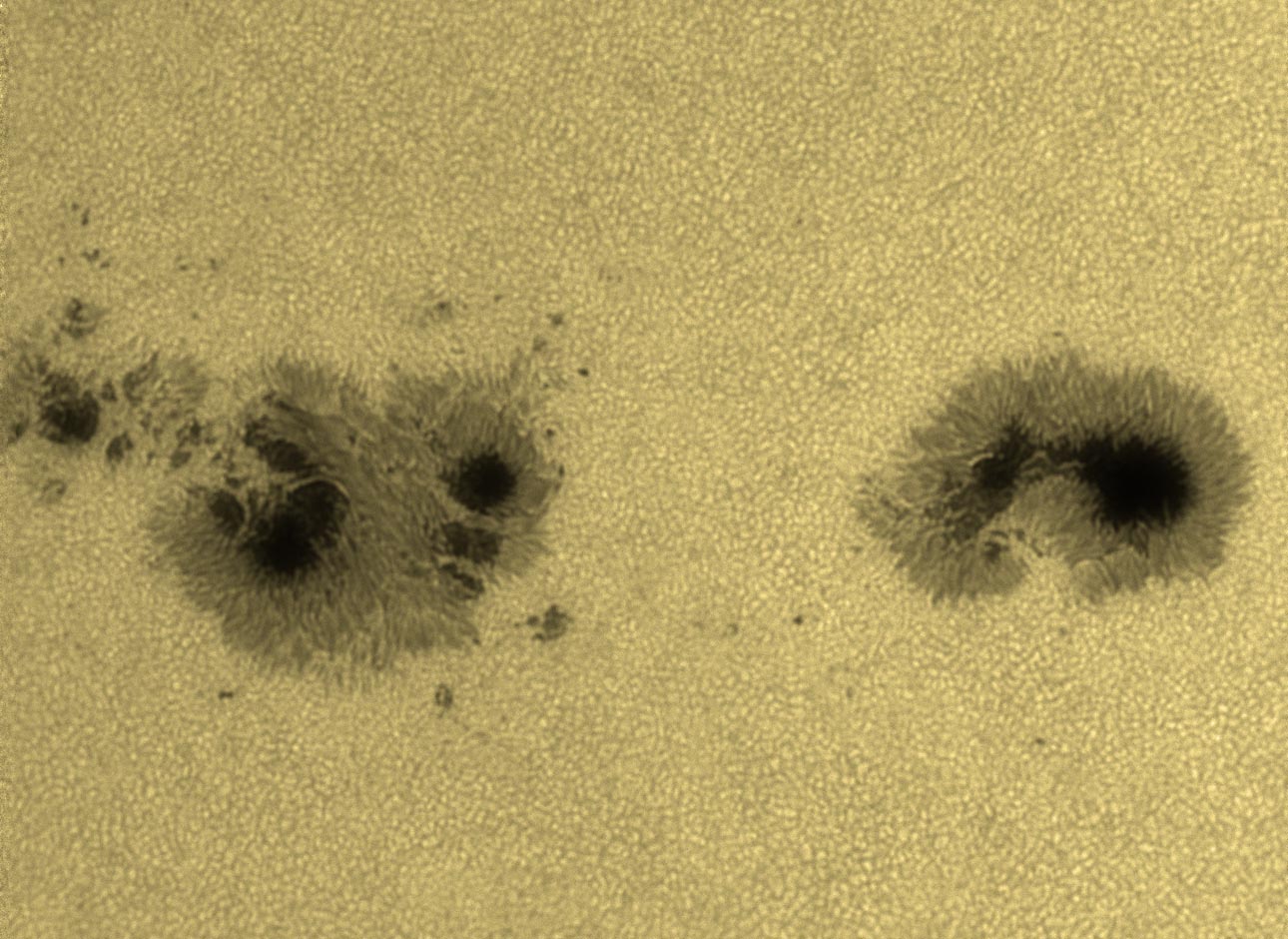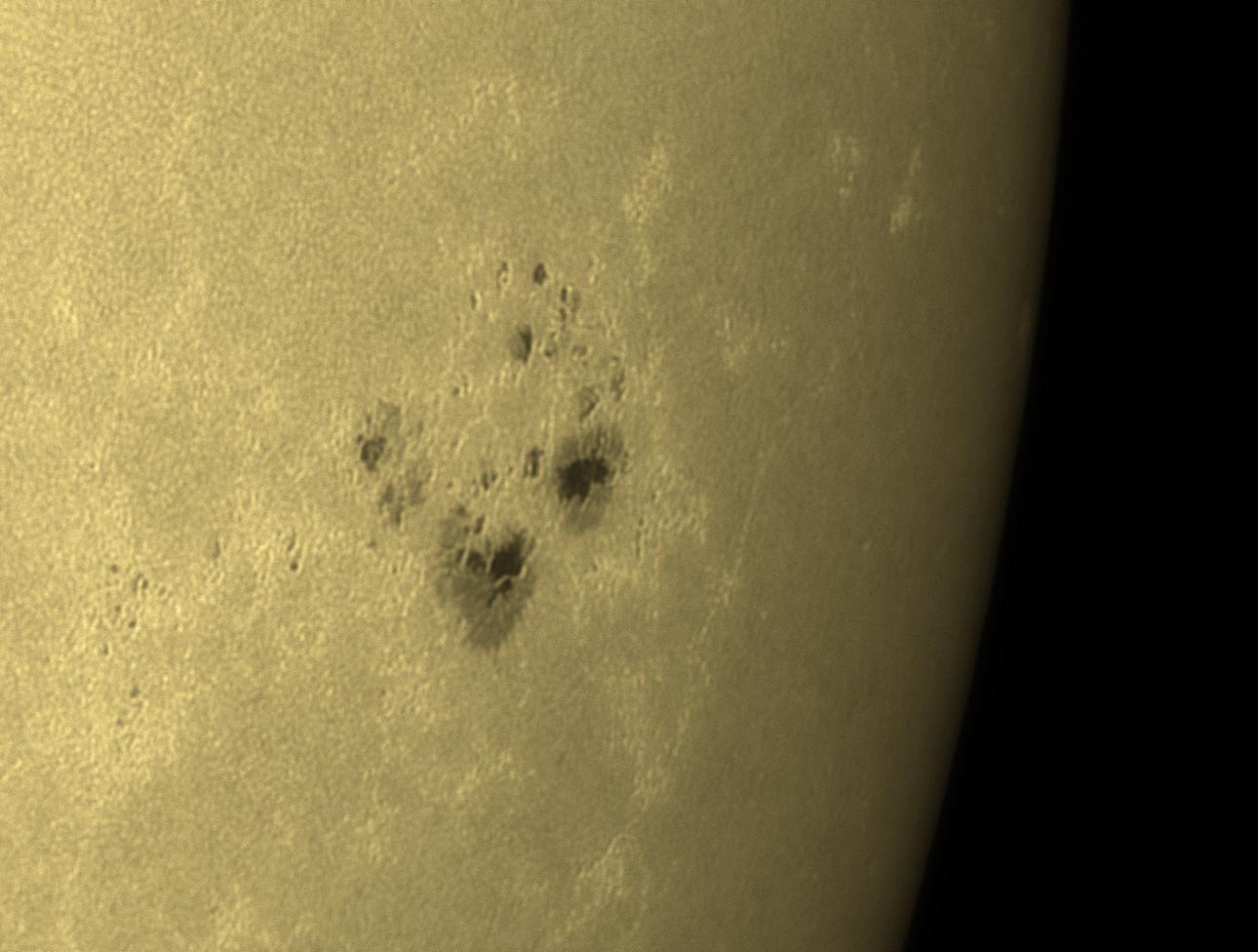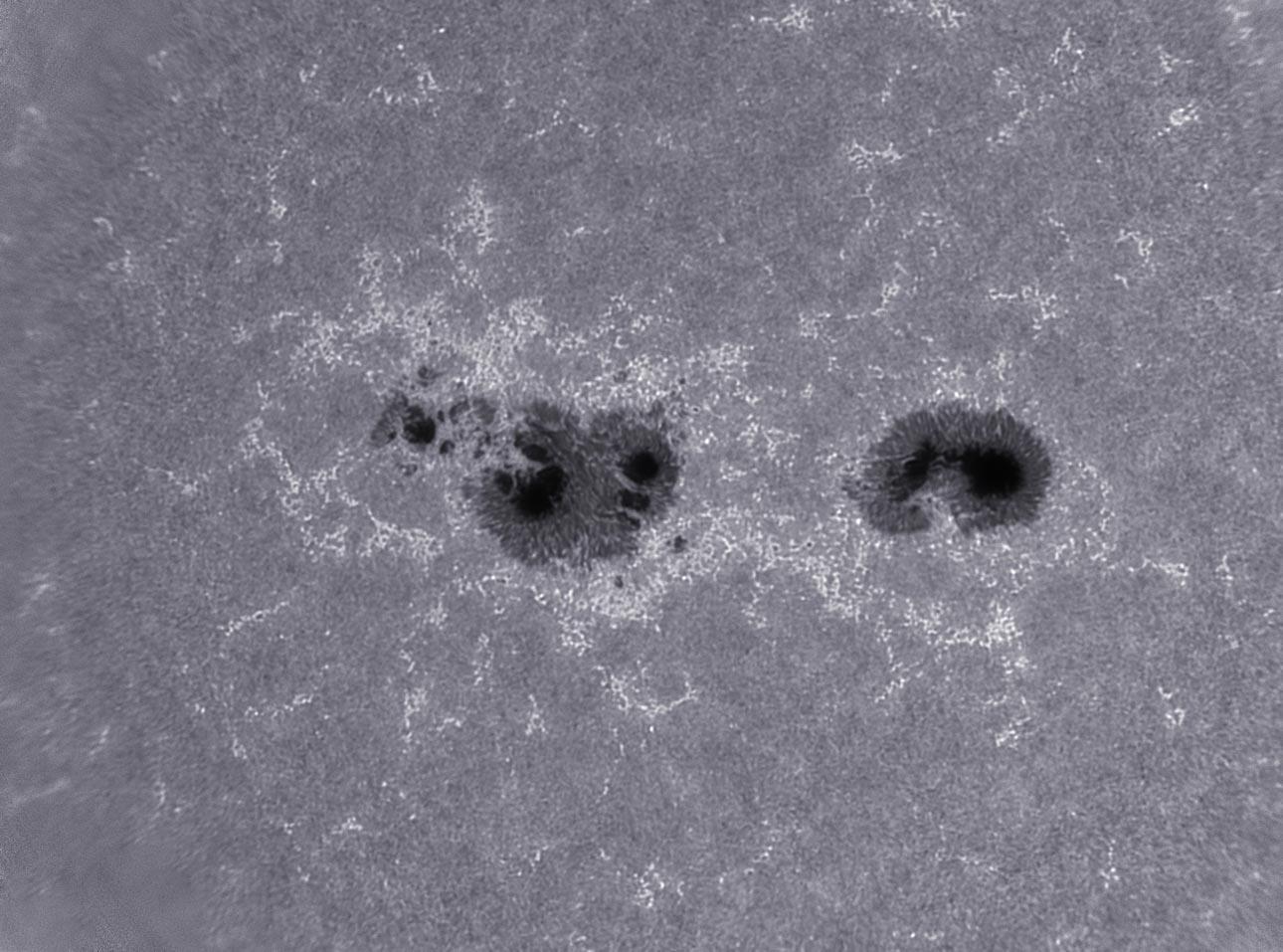Sun in CaK / White Light With Stellarvue SV80s , AR152 + Lunt CaK filter & Baader Wedge Uploaded 6/21/15 Daily Report For Sunday, June 21st, 2015
Images below are 1290 wide and non clickable
A couple of nice spot groups today, after such a very long peroid of basically a blank solar disk.
WHITE LIGHT:
Lets start with the full disk view with the 80mm Stellarvue, Baader wedge and Continuum filters.
Next, I made this two part panorama with the AR152 and same wedge and filters at prime focus:
If we then put in the 5x televue powermate barlow to bring the focal length up to 5000mm,
we can now resolve the granulation a bit, despite the poor seeing:
And on the limb this emerging spot region is just coming onto the disk:
Finally, here in the light of Calcium K (Near UV) we can see quite a stunning scene around the active regions at
this wavelength. A Lunt B600 Cak filter was used - not the greatest for imaging due to its small exit aperture, but
the flat was able to rescue it:
Finally, the limb group in Cak:
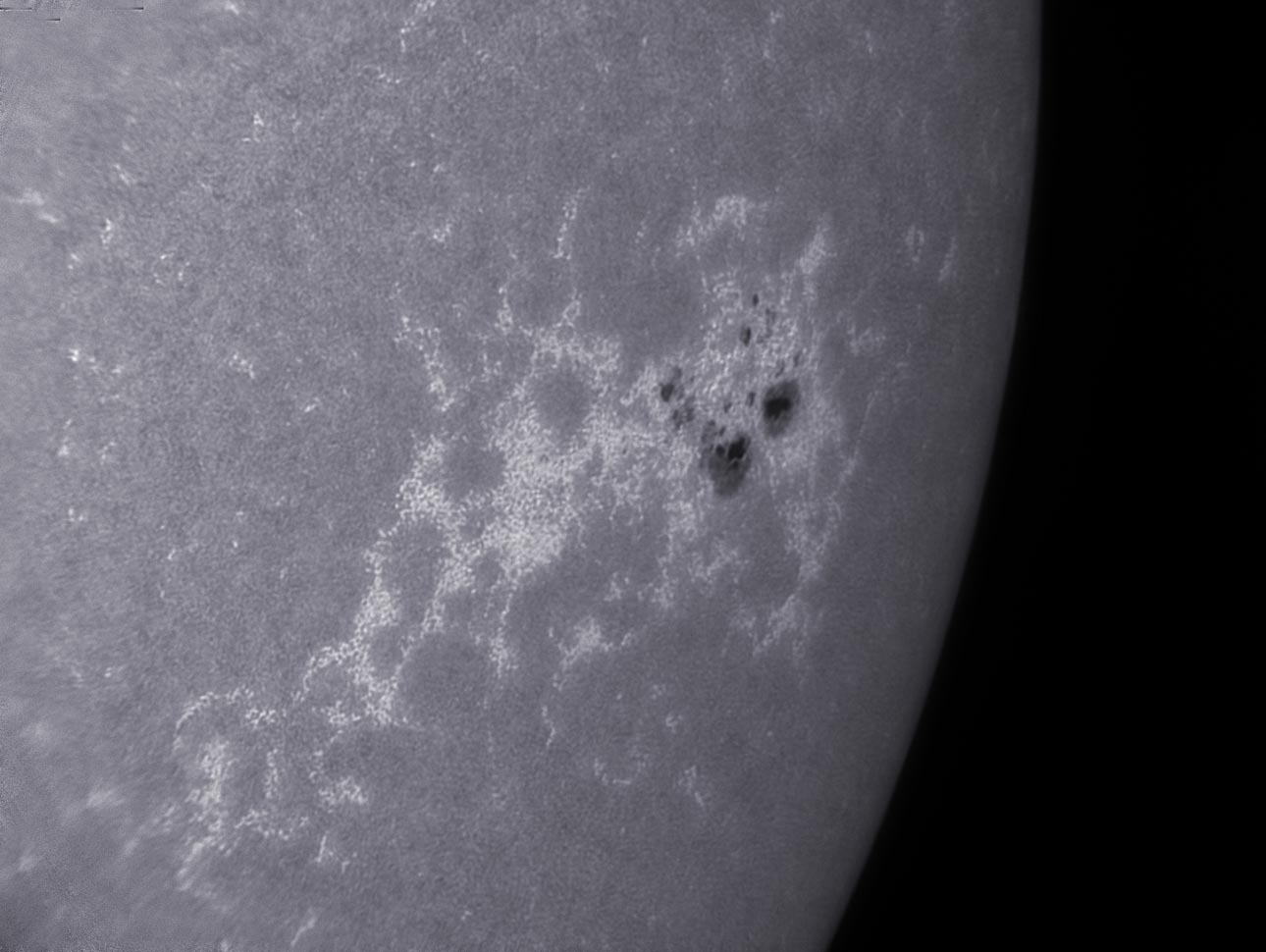
Instruments: SV80S with Zeiss Apochromat or Explore Scientific AR152 Platform: Astrophysics 1200 Camera: DMK 51 (1600 x 1200) Location: Payson, Arizona Elevation: 5150 ft. Sky: Seeing 3/10, Transparency 6/10 Outside Temperature: 85F Processing: Registax 6, Photoshop CS2 Solar Home Page HOME SCHMIDT GALAXIES EMISSION NEBS REFLECTION NEBS COMETS GLOBULARS OPEN CLUST PLANETARIES LINKS
